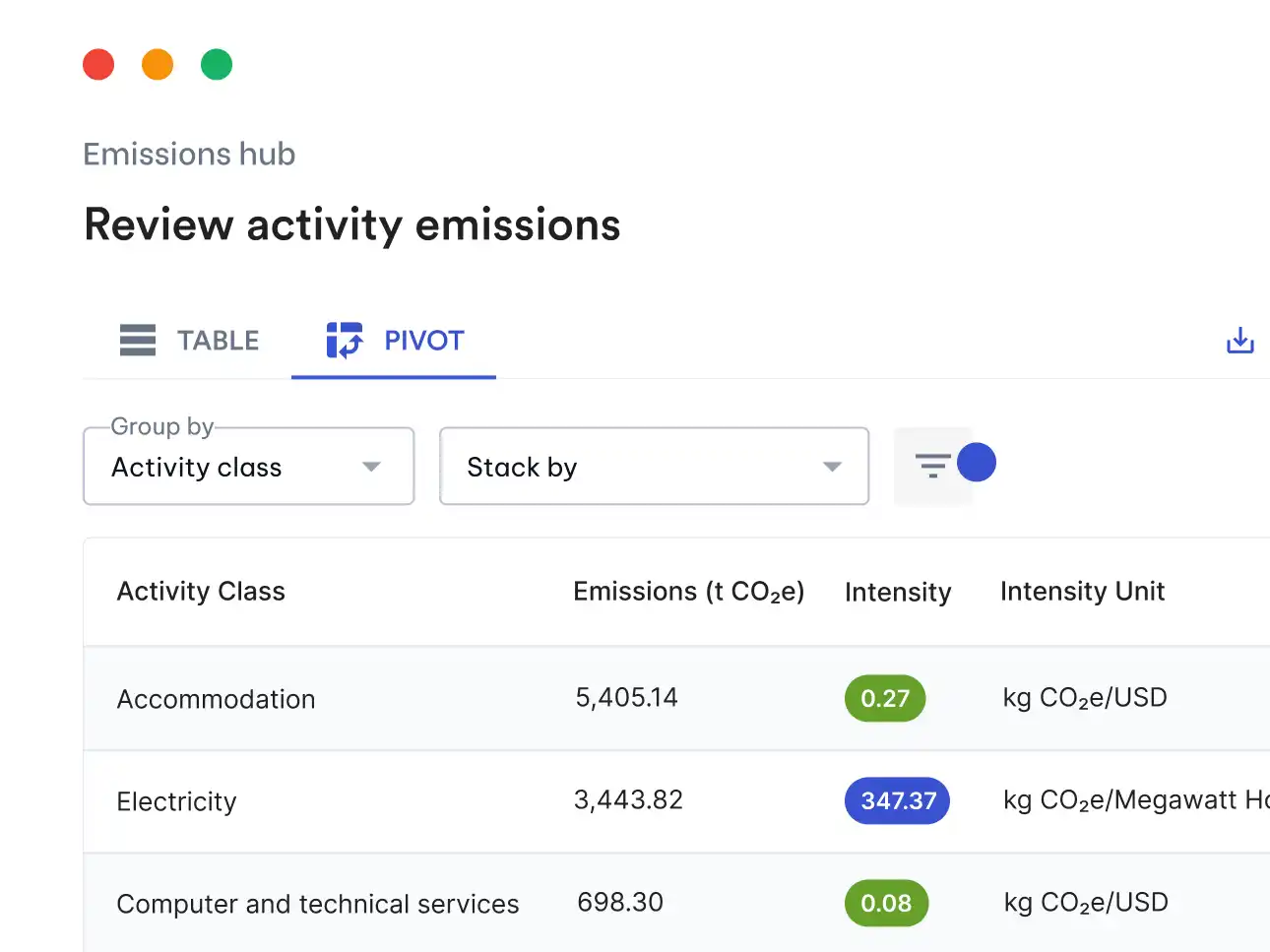Michael Bloomberg is a well-known figure in the financial world, having founded Bloomberg L.P. and served as the 108th Mayor of New York City. However, did you know that in addition to his investing history, Bloomberg is also the chairman of the Task Force on Climate-related Financial Disclosures (TCFD)? The TCFD provides guidance and recommendations for companies and stakeholders to effectively manage financial risks related to climate change. Its voluntary set of recommendations has now become part of the regulatory framework of several jurisdictions, including the European Union, United Kingdom, Singapore, Canada, Japan, South Africa, and New Zealand. Read on for in-depth look into the TCFD, including its formation, why it’s important, what its recommended disclosures entail, and its future role in ESG reporting.
How and why was the TCFD formed?
The TCFD was formed in 2015 by the Financial Stability Board (FSB), an international body which was established in 2009 after the global financial crisis (GFC) to strengthen financial systems and increase the stability of international financial markets by coordinating national monetary authorities and international standard-setting bodies.
The FSB formed the TCFD as a response to the failings of the 2015 Paris Agreement. The Paris Agreement set out Nationally Determined Contributions (NDCs), which were committed to by 189 countries. While these historic commitments were widely praised by the United Nations and the Centre for Climate Change and Economic Policy, they were not seen as enough to reach the goal of keeping warming well below 2°C or efforts to limit it to 1.5°C. One of the greatest criticisms of the NDC approach was the lack of transparency and international standards in demonstrating and disclosing that countries were meeting their commitments.
To address these issues, the Group of Twenty (G20) and the FSB formed the TCFD in December 2015. Under the chairmanship of Michael Bloomberg, the Task Force published recommendations designed to standardise worldwide climate-related disclosures that could "promote more informed investment... and in turn, enable stakeholders to understand better concentrations of carbon-related assets in the financial sectors."
In other words, the TCFD was established in response to the growing recognition of the need for businesses and other stakeholders to understand and manage the financial risks associated with climate change. The TCFD's goal was to develop a framework of voluntary, consistent climate-related financial disclosures for use by companies in providing information to stakeholders.
Why is the TCFD important?
The TCFD plays a crucial role in promoting transparency and consistency in climate-related financial reporting. Climate change has a significant impact on the long-term value of a company, and the TCFD helps companies understand and manage the financial risks associated with climate change, which helps to build trust and credibility with investors and other stakeholders.
At the heart of the TCFD's mission is the notion of disclosure. This includes companies providing clear and concise information on how their activities may be affected by climate-related risks, how their strategies may be impacted, and how they plan to manage these risks and opportunities. To this end, the TCFD recommends that companies identify and disclose their targets, metrics, and strategies for managing climate-related risks, as well as their progress in achieving these goals.
The TCFD recommends companies to disclose information so that investors, lenders, insurance underwriters, and other stakeholders can adequately access and price financial risks and financial impact related to climate change. In its own words, the TCFD states that "one of the essential functions of financial markets is to price risk to support informed, efficient capital-allocation decisions. [...] Without the right information, investors and others may incorrectly price or value assets, leading to a misallocation of capital."
Climate change and the financial health of companies are inextricably connected. Therefore, the TCFD highlights the importance of addressing climate change in financial decision-making. The TCFD provides guidance on how to make climate-related financial disclosures that are consistent and meaningful, which helps companies to better prepare for the impacts of climate change and ensure their long-term sustainability.
What is the TCFD reporting framework?
The TCFD has created a set of "recommended disclosures" that provide guidance on how organizations can make meaningful and consistent disclosures regarding climate-related financial risks and opportunities. Commonly referred to as the “TCFD framework” or “TCFD reporting framework”, these disclosures are widely adoptable and applicable to organizations across sectors and jurisdictions, and they are designed to solicit forward-looking information that can be included in mainstream financial filings.
The TCFD framework identifies four key elements for climate-related financial disclosures: governance, strategy, risk management, and metrics and targets. These elements provide guidance for organizations to make more informed decisions about climate-related risks and opportunities, as well as to manage these risks effectively.
It is worth noting that TCFD focuses solely on environmental disclosure, unlike broader ESG frameworks that encompass environmental, social, and governance factors. In addition, it is focused specifically on the “climate” component of environmental disclosure, with aspects such as biodiversity, air and water quality, and pollution falling outside the scope of TCFD.
Overall, the TCFD's recommended disclosures provide organizations with a clear and comprehensive framework for climate risk disclose. By adopting this framework, organizations can better prepare for the impacts of climate change and ensure their long-term sustainability, while building trust and credibility with their stakeholders.
What are TCFD’s recommended disclosures?
The TCFD reporting framework consists of 11 recommended disclosures divided into 4 core themes aligned to how organizations operate:
Governance — Disclose the organization’s governance around climate-related risks and opportunities. Recommended disclosures:
a. Describe the board’s oversight of climate-related risks and opportunities.
b. Describe management’s role in assessing and managing climate-related risks and opportunities.
Strategy — Disclose the actual and potential impacts of climate-related risks and opportunities on the organization’s businesses, strategy, and financial planning where such information is material. Recommended disclosures:
a. Describe the climate-related risks and opportunities the organization has identified over the short, medium, and long term.
b. Describe the impact of climate-related risks and opportunities on the organization’s businesses, strategy, and financial planning.
c. Describe the resilience of the organization’s strategy, taking into consideration different climate-related scenarios, including a 2°C or lower scenario.
Risk Management — Disclose how the organization identifies, assesses, and manages climate-related risks. Recommended disclosures:
a. Describe the organization’s processes for identifying and assessing climate-related risks.
b. Describe the organization’s processes for managing climate-related risks.
c. Describe how processes for identifying, assessing, and managing climate-related risks are integrated into the organization’s overall risk management.
Metrics and Targets — Disclose the metrics and targets used to assess and manage relevant climate-related risks and opportunities where such information is material. Recommended disclosures:
a. Disclose the metrics used by the organization to assess climate-related risks and opportunities in line with its strategy and risk management process.
b. Disclose Scope 1, Scope 2 and, if appropriate, Scope 3 greenhouse gas (GHG) emissions and the related risks.
c. Describe the targets used by the organization to manage climate-related risks and opportunities and performance against targets.
In addition to its recommended disclosures, the TCFD offers its “principles for effective disclosure”, its guidance for firms to consider in order to “help achieve high-quality disclosures that enable users to understand the impact of climate change on organizations”.
TCFD principles for effective disclosure
- Disclosure should represent relevant information
- Disclosure should be specific and complete
- Disclosure should be clear, balanced, and understandable
- Disclosure should be consistent over time
- Disclosure should be comparable among companies within a sector industry or portfolio
- Disclosure should be reliable, verifiable, and objective
- Disclosure should be provided on a timely basis
Source: TCFD
Who uses the TCFD?
The list of companies using the TCFD continues to grow as more organizations recognize the importance of transparent, consistent, and comprehensive climate-related financial disclosures. As of November 2022, the number of TCFD supporters surpassed 4,000 organizations from 100+ countries with a combined market capitalization of $27 trillion. This includes major corporations such as Amazon, Apple, Amazon, BP, and Microsoft, as well as financial institutions such as BlackRock, Goldman Sachs , JPMorgan Chase, and Morgan Stanley.
In addition, the widespread adoption of the TCFD by governments around the world is a testament to them recognizing the importance of climate-related financial disclosures. In particular, the European Union and the G7 (US, France, Germany, UK, Canada, Italy and Japan) have agreed to make TCFD-aligned reporting mandatory. Other countries that have passed TCFD-aligned reporting legislation include Hong Kong, New Zealand, Singapore, South Africa, and Switzerland.
A few items of note:
- The UK was the first G20 country to make it mandatory for Britain’s largest businesses to disclose their climate-related risks and opportunities. As of April 2022, more than 1,300 of the largest UK-registered businesses are required to disclose climate-related financial information in line with the TCFD recommendations. This includes many of the UK’s largest traded companies, banks, and insurers, as well as private businesses with more than 500 employees and £500 million in turnover.
- The US Securities and Exchange Commission’s (SEC) 2022 proposal around “Enhancement and Standardization of Climate-Related Disclosures” is explicitly based off TCFD and has significant overlap with the TCFD’s recommended disclosures.
- The UN’s Principles for Responsible Investment (PRI), the world’s largest ESG guidance framework, has also endorsed TCFD-aligned reporting since 2020. This demonstrates a growing recognition of the need for transparency and consistency in climate-related financial reporting.
The widespread adoption of the TCFD is an encouraging sign that governments and organizations recognize the importance of being transparent about their climate-related financial risks and opportunities.
How does TCFD fit in the future of ESG reporting?
As discussions continue around the development of a global standard in corporate reporting, the TCFD framework is well-positioned due to its status as the leading framework for climate-related financial disclosures. For example, the International Financial Reporting Standards (IFRS) is integrating TCFD recommendations into its International Sustainability Standards Board (ISSB) framework, which is expected to be released in Q2 2023. Therefore, the TCFD's role in climate-related disclosures will remain critical as this global standard is discussed and developed.





